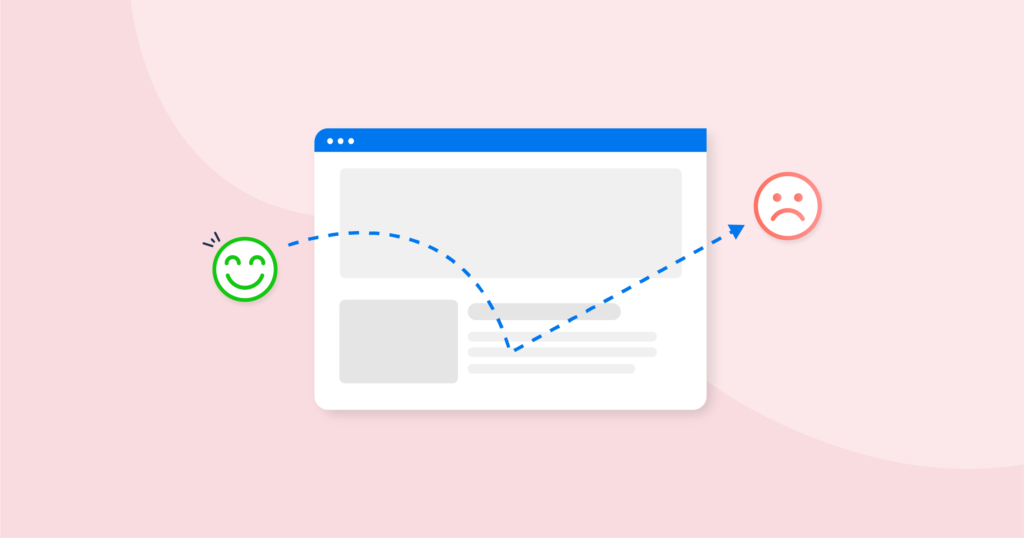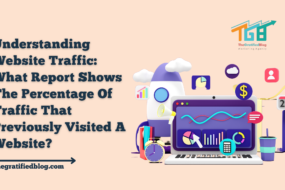
Are you unhappy with your website’s performance?
Do you need to see the conversions you expected?
If so, it might be time for a website redesign.
It is a definite course for improving your webpage’s overall performance.
By naturally incorporating the keyword “website redesign guide” into this paragraph, we can explore how such a guide can help you achieve better results.
It’s important to consider whether any outdated topics need to be refreshed and whether introducing new products or services could improve business outcomes.
In such cases, referring to a comprehensive website Can offer valuable insights and strategies to optimize your site’s content, refresh its design, and enhance navigation to improve conversions and overall website performance.
What Is Website Redesign?
It is a process of updating your web pages, which includes revamping content, refreshing designs, and further developing pathways for better conversions and site performance.
A website restructuring can help you achieve better results from your site by improving the overall user experience.
It’s important to note that web development is different from web development.
Site development involves creating a website from scratch and changing an existing website.
Steps To Follow While Website Redesign
Goal Setting
The first step in any website redesign should be to set goals and objectives, including considering how often you should redesign your website and how much it costs to redesign a website.
What do you want to achieve with your website? What are your goals for the redesign? These goals will serve as a roadmap for the remainder of the process and Guarantee that your website is tailored to fulfill your specific requirements.
When determining how often to redesign your website, it’s essential to consider factors such as changing industry trends, evolving user expectations, and technological advancements.
By periodically reassessing and updating your website design, you can stay relevant, enhance user experience, and keep up with the ever-changing digital landscape.
Implementing practical website redesign tips also plays a vital role in attaining these goals, all the while considering the associated costs of the redesign.
Conducting A Website Audit
Once you have set your goals, you must conduct a website audit.
A website audit should include analyzing your website’s content, layout, navigation, and design.
That will aid in pinpointing areas for enhancement and guaranteeing the website is up to date.
Reviewing Your Website Analytics
After conducting a website audit, it’s time to review your website analytics.
This will help you understand how visitors Engage with your website visitors and pinpoint areas that require enhancement.
To get started, look at your website’s bounce rate, conversion rate, and traffic sources.
Identifying Problem Areas On Your Website
B2B companies constantly experiment with various target market strategies to reach their audience.
LinkedIn, with its vast user base of business professionals, provides an excellent platform for connecting and communicating.
It’s especially beneficial for B2B companies looking to enhance their online presence through effective business website design.
Creating A Plan Of Action
After you have identified the problem areas on your website, it’s time to create an action plan.
This plan should include a list of the changes you want to make to your website.
Be sure to include a timeline for each change to stay on track.
Implementing The Plan
After creating a plan of action, it’s time to implement the changes.
This is where the real work of it begins.
Be sure to test each change before implementing it on your website.
This will help ensure effective changes and improve your website’s performance.
Testing And Measuring Results
After implementing the changes, it’s time to test and measure the results.
Look at your website’s traffic, conversion rate, and bounce rate to see the effects of the changes.
This will help you see how your website is performing after the restructuring.
If you do not see the desired results, adjust your plan and continue testing until you find a winning combination.
10 Reasons Why You Should Consider Website Redesigning
Outdated Design:
If your website needs to be updated and aligned with current design trends in web design and development, your business may be behind the times.
A website redesign project timeline in web design and development is crucial in ensuring a smooth and efficient transformation of your online presence.
By incorporating web design and development into the paragraph, it becomes clear that a redesign improves the aesthetic appeal and keeps your website up-to-date with contemporary design standards.
Additionally, a well-defined web design and development project Establishing a timeline enables you to establish realistic expectations and establish a structured approach to the entire redesign process.
Mobile Responsiveness:
With the increasing use of mobile devices, having a mobile-friendly website is crucial.
Should your existing website require optimization for mobile devices, redesigning it can ensure a seamless experience across all screen sizes.
When initiating a website redesign, it is crucial to have a comprehensive plan in place.
A website redesign planning guide can be beneficial in outlining the key steps and considerations throughout the process.
A well-structured guide can effectively address various aspects such as user experience, visual design, content strategy, and search engine optimization (SEO).
This ensures that your redesigned website looks great on mobile devices and performs well in terms of usability, engagement, and visibility.
User Experience (UX) Improvement:
It provides an opportunity to enhance the user experience.
You can identify pain points by analyzing user behavior and feedback and improving navigation, content organization, and overall usability.
Improved Conversion Rates:
If your website needs to generate the desired conversions or leads, it can help address the underlying issues.
By optimizing the layout, calls-to-action, and overall user flow, you can increase the likelihood of visitors taking desired actions and enhance the overall performance of your site.
Search Engine Optimization (SEO) Enhancement:
When planning a website redesign, it’s essential to keep a website redesign checklist handy.
As search engines consistently update their algorithms, a website redesign can provide an excellent opportunity to implement SEO best practices.
By following a comprehensive checklist, you can optimize the website structure, improve page load speed, and ensure proper keyword integration throughout the website.
These steps are crucial for enhancing search engine rankings and boosting organic traffic to your designed website.
Brand Consistency:
A redesign lets you synchronize your website with your brand identity and choose the right web hosting solution.
By integrating uniform branding elements like colors, fonts, and imagery, you can reinforce your brand image and create a cohesive online presence hosted on reliable web hosting services.
Ensuring your website is supported by a robust hosting infrastructure enhances its performance and availability, providing a seamless user experience for your visitors.
Each sentence is now separated and given space for clarity.
Competitive Edge:
If your competitors have recently updated their websites, it’s crucial to stay competitive.
A redesign can help you stand out, attract visitors, and retain customers by offering a better online experience.
Integration Of New Technologies:
Advancements in technology can offer exciting possibilities for your website.
By incorporating new features and functionalities like chatbots, personalization, or interactive elements, you can provide a more engaging experience for your visitors.
Improved Loading Speed:
Slow-loading websites can lead to higher bounce rates and frustrated visitors.
A redesign with a reputable website redesign agency allows you to optimize your website’s performance, improve loading times, and provide a smooth browsing experience.
Teaming up with a professional agency guarantees not only the visual appeal of your website but also speed and responsiveness, resulting in increased user engagement and conversions.
Content Strategy Alignment:
A website redesign allows you to reevaluate your content strategy and consider factors like this.
Evaluate the efficacy of your existing content, pinpoint any deficiencies, and devise a strategy to deliver. Create fresh, relevant, and engaging content that aligns with your business goals while considering the financial investment required for the redesign.
By incorporating the keyword “website redesign costs” into your overall content strategy, you can ensure the allocation of essential resources and base decisions on well-informed choices that balance the value of the redesign with its associated expenses.
A website redesign can help you achieve various goals, including improving aesthetics, enhancing user experience, increasing conversion rates, and ensuring you remain competitive in a rapidly evolving online landscape.
It’s essential to periodically evaluate your website’s performance and consider redesigning it to meet the changing needs of your audience and business.
By setting website redesign goals, you can effectively align your efforts with specific objectives, such as enhancing brand visibility, optimizing navigation, and incorporating responsive design.
This proactive approach allows you to address existing limitations and create a fresh, engaging online presence that resonates with your target audience.
Common KPIs To Track The Success Of Website Redesign
Website Traffic
You can track website traffic by looking at the number of visitors to your website before and after the redesign.
By utilizing tools such as Google Analytics, you can gain valuable insights into the performance of Explore user interactions on your website by using Google Analytics. This tool allows in-depth data analysis, analyzing metrics like page views, bounce rates, and average session duration.
By incorporating Google Analytics into your tracking strategy, you can accurately measure the impact of the redesign on your website’s traffic and make data-driven decisions to optimize its performance.

Conversion Rate
You can track the conversion rate by looking at the number of website visitors who take action after visiting your website.
This valuable metric helps you gauge the effectiveness of your website in engaging and converting visitors.
By analyzing the percentage of visitors who complete desired actions, such as completing a purchase, whether through newsletter subscriptions or by submitting a contact form, you gain insights into the performance of your marketing efforts.
Monitoring the conversion rate allows you to identify areas for improvement, optimize your website’s design and content, and refine your marketing strategies.
It enables you to make data-driven decisions to enhance user experience, target specific audience segments, and increase conversion rates.
Regularly tracking and analyzing this metric empowers you to adapt and evolve your online presence, ultimately driving tremendous success and achieving your business objectives.

Bounce Rate
Tracking bounce rates provides valuable insights into user engagement on your website.
By analyzing the percentage of visitors who exit after viewing a single page, you gain a clear indication of whether your content is captivating enough to keep them interested.
High bounce rates may indicate a lack of relevance, poor design, or slow loading times, urging you to optimize these aspects for a better user experience.
Conversely, low bounce rates signal visitors find value in your content, explore multiple pages, and potentially convert into customers.
Monitoring bounce rates enables you to identify patterns, refine your marketing strategies, and enhance your website’s performance to retain visitors and drive conversions.Regularly analyzing and interpreting these metrics empowers you to make data-driven decisions to maximize user engagement, boost conversions, and fulfill your business goals.

Time On Site/Page
You can track time on site/page by looking at the average amount of time website visitors spend on your website.
This metric provides valuable insights into user engagement and the effectiveness of your content.
Analyzing the average time spent helps you gauge user interest and identify areas for improvement.
You can optimize your site’s layout and content by understanding which pages have longer or shorter durations.
Moreover, tracking time on site lets you assess the effects of any modifications or updates you implement on your website.
It also allows you to compare user behavior across different campaigns or marketing initiatives, helping you fine-tune your strategies.
Ultimately, this data empowers you to enhance user experience, increase conversions, and make data-driven decisions to achieve your online objectives.
Pages Per Session
Tracking pages per session is a valuable metric for analyzing user engagement and website performance.
By calculating the average number of pages viewed during a session, you gain insights into visitor behavior and your site’s content and navigation effectiveness.
A high pages-per-session value indicates that users explore multiple pages, suggesting a positive user experience and a higher likelihood of conversions.
Conversely, a low value may indicate a lack of engagement or difficulty finding relevant information. Observing this metric lets you recognize patterns, make data-driven decisions, and optimize your website.
It helps you understand user preferences, improve content flow, enhance navigation, and ultimately enhance the overall user experience.With pages per session as a guiding metric, you can shape your website to be more compelling, interactive, and customized to suit the requirements of your visitors.

New Users
You can track new users by looking at the number of website visitors who are new to your website.
This metric provides valuable insights into your user acquisition efforts.
By analyzing the influx of new visitors, Assess the efficiency of your marketing campaigns and promotional strategies.
Understanding the behavior and preferences of these new users allows you to tailor your content and offerings to their needs, enhancing their overall experience.
Additionally, tracking new users enables you to identify potential areas for improvement, such as optimizing landing pages or streamlining the user onboarding process.
With this data in hand, you can make data-driven decisions to attract and retain a larger audience, expanding your reach and fostering long-term growth.
Monitoring new user engagement ultimately empowers you to fine-tune your digital presence and cultivate a loyal and expanding customer base.

Returning Users
You can track returning users by looking at the number of website visitors who have visited your website.
This metric provides valuable insights into user engagement and loyalty.
By examining the regularity and duration of visits, you can determine if users are returning regularly or just making occasional visits.
Furthermore, tracking returning users allows you to assess and measure the effectiveness of your marketing campaigns and website content in building a loyal audience.
It also helps you understand user behavior patterns and tailor your strategies to enhance user experience and retention.
Additionally, tracking returning users enables you to identify potential conversion opportunities by analyzing their browsing history and interests.
By leveraging this data, you can implement personalized marketing initiatives to target returning users and drive repeat business.
Monitoring returning users is crucial for optimizing your website’s performance, improving user engagement, and fostering long-term customer relationships.

Engagement
Monitor engagement by observing the number of website visitors who take action on your website.
This can include completing a purchase, submitting a contact form, subscribing to a newsletter, or sharing content on social media.
By monitoring these metrics, you gain a valuable Gain understanding of the effectiveness of your website and its content.
Additionally, analyzing user behavior through heatmaps and click-through rates can provide a further understanding of how visitors navigate your site.
Tracking engagement enables you to identify areas of improvement, optimize your conversion funnel, and tailor your Refine marketing strategies to connect with your target audience more effectively.
It’s essential to review these metrics regularly. Utilize data-driven insights to improve user experience and drive desired outcomes.
By leveraging analytics tools and conducting A/B testing, you can continually refine your website and maximize its engagement potential.

Website Redesign Guidance For The Complete Beginner
Key Takeaways
If you’re ready to take your website to the next level, contact our team of experts today, and we would be happy to help you with a redesign.
Give us a call or email, and we’ll start making your website goals a reality.
Our team of experts will collaborate with you to craft a visually appealing website that is user-friendly and easy to navigate.
We’ll consider the latest design trends, Adhering to current standards and best practices, guaranteeing that your website remains current and modern.
With our help, your website will be optimized for search engines, simplifying the process for potential customers to find you online.
We’ll also ensure your website is mobile-friendly and can be accessed from any device.
Don’t wait any longer to take your website to the next level.
Contact us today, and let us help you achieve your website goals!
Thanks for reading.








No Comments